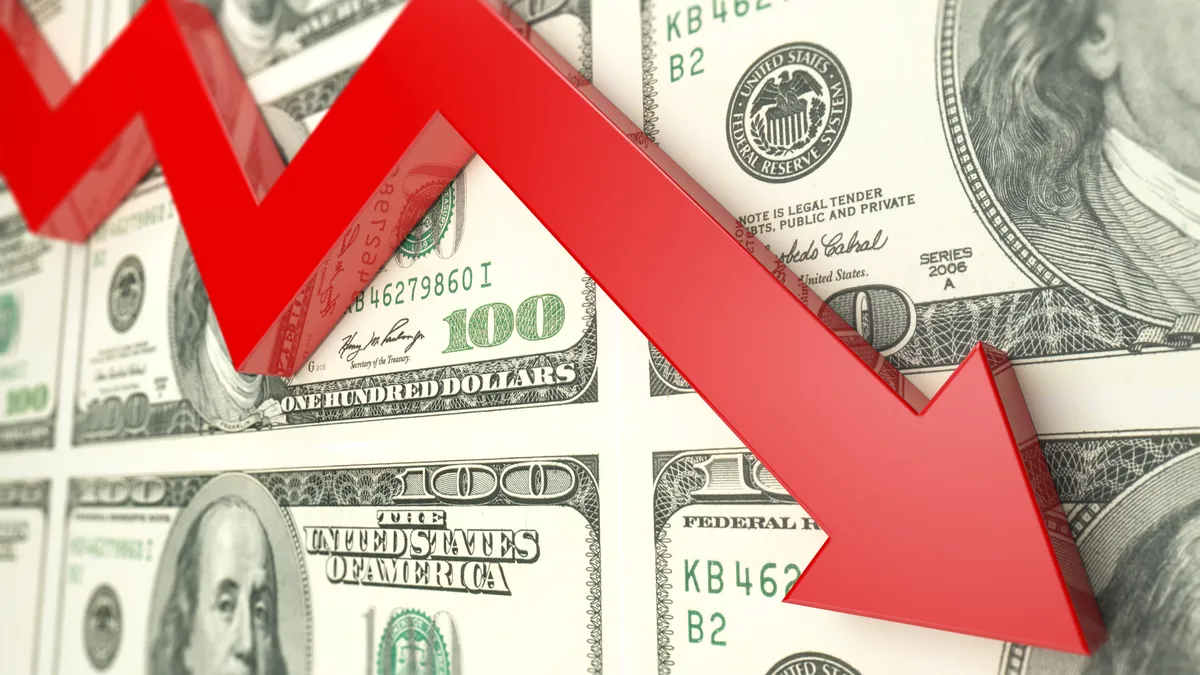Dive Brief:
- Forty percent of respondents to a U.S. business survey reported falling profit margins, a level of pessimism that usually coincides with recession and that was last reported during the pandemic-induced downturn in mid-2020, the National Association for Business Economics said. In October, 32% of respondents flagged declining profit margins.
- Slightly more than half of respondents expect a better than 50% odds of a recession during the next 12 months, NABE said, citing a Jan. 4-11 survey of 60 association panelists. Sixty-three percent of respondents reported raising wages during the past three months and anticipate that the trend will persist this quarter.
- The survey results “indicate widespread concern about entering a recession this year,” according to Julia Coronado, president of NABE and founder and president of MacroPolicy Perspectives.
Dive Insight:
The NABE survey follows recent signs that 2022 ended with a cooling in consumer spending, manufacturing, labor demand, inflation and economic growth.
The Conference Board on Monday said its Leading Economic Index “declined sharply” in December for the second straight month, signaling recession in the near term.
“There was widespread weakness among leading indicators in December, indicating deteriorating conditions for labor markets, manufacturing, housing construction and financial markets in the months ahead,” Ataman Ozyildirim, senior director for economics at the Conference Board, said in a statement.
The data suggests that the Federal Reserve is making progress in reining in demand and curbing inflation with the most aggressive monetary tightening since the 1980s.
Economic growth probably slowed last quarter to an annual rate of about 2% from 3.2% during the third quarter, Fed Governor Christopher Waller said Friday.
“I expect such slowing to continue in this quarter, which is both expected and desirable in our ongoing fight to lower inflation,” Waller said in a speech titled, “A Case for Cautious Optimism.”
Waller and other Fed policymakers have recently said they favor increasing the federal funds rate by a quarter point at the end of a scheduled two-day meeting on Feb. 1.
“Beyond that, we still have a considerable way to go toward our 2% inflation goal, and I expect to support continued tightening of monetary policy,” Waller said, echoing comments by other Fed officials.
Fed policymakers raised the benchmark interest rate by 4.25 percentage points in 2022 to a range of 4.25% to 4.5% and, based on the median of their projections, expect to push up the main rate to 5.1% by year-end.
Rising interest rates ranked as the top risk among NABE panelists, with 31% citing the trend as their leading concern. Increased cost pressures was second, identified as the top risk by 22% of respondents.
“The good thing is the numbers are showing that the monetary tightening is working and the inflation numbers are coming down,” Qualcomm Chief Economist Kirti Gupta said Monday during a NABE webcast, while noting that the central bank is unlikely to slow this year to the Fed’s 2% target.
The economy will probably dip into a “short and shallow recession” in 2023, according to Gupta and Sara Rutledge, managing director of StepStone Group.
In a positive sign for the business outlook, half of survey respondents reported no shortages for capital goods, materials/inputs and labor, although 40% said skilled workers are scarce.












